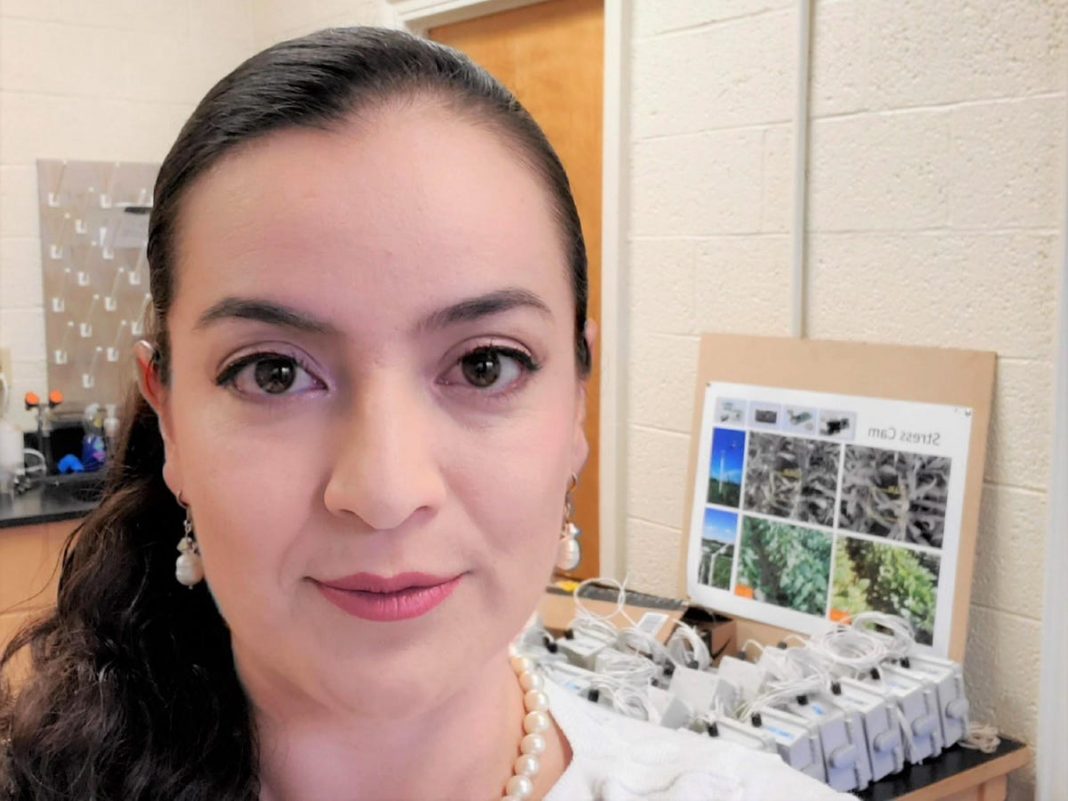Paula Ramos-Giraldo, Computer Vision, and Machine Learning Scientist at North Carolina State … [+]
Paula Ramos-Giraldo
Colombian researcher Paula Ramos-Giraldo creates intelligent machines that can automate agricultural tasks, making those processes faster and safer.
Ramos-Giraldo, who is a computer vision, and machine learning scientist at North Carolina State University in Raleigh, North Carolina, says she develops technologies that can then be operated by non-technical people and those without expertise in computer vision systems.
“My central research goal is to develop intelligent systems/machines that can understand and recreate the visual world around us to solve real-world needs, such as those in the agricultural industry,” she says, “My developments have worked in harsh and critical conditions, such as outdoor agricultural environments with no lighting control, high full solar radiation, and high temperature.”
One machine Ramos-Giraldo helped developed is called Benchbot.
This machine has its roots in a 2019 effort to figure out which varieties of cover crops for shade tolerance were doing the best under different shade conditions. A team of two people spent over 120 hours in a greenhouse with temperatures of more than 100 degrees Fahrenheit (about 38 degrees Celsius), measuring the width and height of each of over 800 plants.
In order to automate this hot and difficult work, Ramos-Giraldo and her team developed a semi-automatic image acquisition device and a central process unit to control the platform and camera movement, mounted on a frame over the plants.
Ramos-Giraldo says her current research focuses on using low-cost embedded platforms, creating large-scale image databases and the systems needed to process and annotate these images.
“Today, these skills are needed in cross-cutting sectors such as autonomous vehicles, health and medicine, security, maintenance, and agriculture,” she says.
Ramos-Giraldo says the lack of resources in Global South countries combined with the large number of urgent needs those societies have makes people there very creative and apt to apply scalable solutions.
“This feature makes the solutions easily scalable, economical and can reach more people around the globe,” she says, “I consider myself to be very pragmatic and combine skills from a specific area of hardware and software knowledge that I have gained through my studies and experience… I have managed to find simple solutions to complex problems.”
BenchBot and OAK-D Camera: Photo from the OpenCV Competitions 2020 and 2021.
Maria Laura Cangianao/Paula Ramos
Coffee Region to Research
Ramos-Giraldo has combined her passions for agriculture and technology throughout her studies.
“I grew up in Manizales, Caldas, Colombia, surrounded by beautiful mountains and the aroma of coffee every morning,” she says.
Ramos-Giraldo started her studies in Electronic Engineering at the National University of Colombia, received a Master’s degree in Electrical Engineering from the Technological University of Pereira, and a PhD from the National University of Colombia.
“In June 2004 I joined the National Research Center of Coffee – CENICAFE and had the opportunity to teach courses in several universities in Colombia, as well,” she says.
She would go on to work in the United States, supporting efforts from the Organic Cropping Systems Lab and Sustainable Agricultural Systems Lab at the USDA to generate new technology to connect farmers through the Internet of Things.
“I’ve made contributions in computer vision, computational photogrammetry, machine learning, embedded systems, edge computing, IoT systems, and cloud computing,” she says.
Paula Ramos-Giraldo, Computer Vision, and Machine Learning Scientist at North Carolina State … [+]
PAULA RAMOS-GIRALDO
Another Colombian researcher using machines to improve agriculture is entomologist Diana Obregon, a PhD student in entomology at Cornell University.
Obregon, says that without bees the production of Colombia’s Solanum quitoense fruits (known as lulo) would be reduced by 51 percent.




